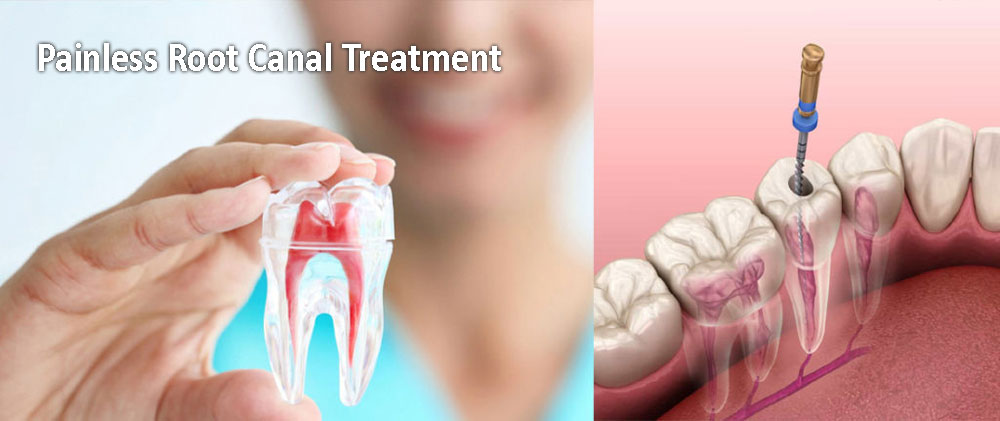Why get a root canal treatment?
An endodontic treatment saves a severely injured, cracked, or decayed tooth when its pulp (the soft inner tissue inside a tooth’s root canal) becomes inflamed or infected. If it is not treated promptly, pain or a tooth abscess (infection) results. Endodontic treatment is also known as a “root canal.”
Root canal treatment is completed in one or two office visits, depending on the presence of infection and the required treatment plan. After restoration, the tooth continues to function like any other tooth. With good oral hygiene, the restored tooth has the potential to last a lifetime.
What is an endodontist?
Endodontists are root canal specialists. They are qualified dentists who have two additional years of education and specialized training in the care and treatment of tooth pulp and the inner parts of the tooth. If a root canal is required, a dentist often refers the patient to an endodontist for treatment. Your endodontist will work closely with your dentist to improve your oral health and restore your natural teeth.
What are some common symptoms?
See your dentist if you experience any of these symptoms:
- Tooth or gum pain, discoloration, or prolonged sensitivity to heat or cold
- A tooth that is tender when it is touched
- A tooth abscess (pus enclosed in the tissues of the jawbone at the tip of an infected tooth)
- Pus drainage in your mouth
- Swelling or tenderness in the lymph nodes under your jaw
Sometimes an endodontic problem can exist without warning signs. In these cases, a Digital X-ray taken during a routine dental checkup will reveal the tooth damage.
What is a root canal treatment?
Root canal treatment involves the removal of the diseased pulp along with the tooth’s nerve (located within a tooth’s root canal). The pulp chamber and root canal(s) of your tooth are then cleaned, medicated and sealed. A dental crown or other restorative treatment is used to protect and strengthen the tooth.
What happens after I am diagnosed?
After reviewing a Digital X-ray of your tooth, your endodontist will thoroughly examine your teeth, gums and supporting bone structure, recommend a treatment plan, discuss it with you, and answer your questions. If a root canal is needed:
- A local anesthetic is applied to the affected tooth and surrounding area
- A small, protective sheet called a “dental dam” is used to isolate the tooth to keep it clean and free of saliva during your procedure
- An opening is made in the top of the tooth and your endodontist will remove the soft pulp and nerve and then shape the interior for filling
- The root canal is cleaned, medicated, and filled with a rubber-like biocompatible material (gutta percha)
- A temporary filling is placed pending your return to your general dentist
- Your general dentist will then place a permanent restoration, such as a crown, to protect the tooth


